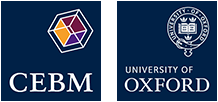Global Covid-19 Case Fatality Rates Oke J, Heneghan C.
Hot topic Updated
Covid-19 | 7th October 2020
|
Florence Nightingale Diagrams of Deaths in England & Wales Heneghan C
Updated
Covid-19 | 11th January 2023
|
Drug vignettes: Colchicine Ferner RE, Sofat R Aronson JK
Updated
Covid-19 | 19th January 2022
|
Measuring vaccine efficacy from population data Oke J, Heneghan C
Updated
Covid-19 | 16th November 2021
|
Monoclonal antibodies directed against SARS-CoV-2: synthetic neutralizing antibodies, the REGN-COV2 antibody cocktail Ferner RE, Aronson JK.
Covid-19 | 6th September 2021
|
More about chloroquine and hydroxychloroquine Aronson JK, Ferner RE.
Covid-19 | 28th July 2021
|
Drug vignettes: Tocilizumab Ferner RE, Aronson JK.
Covid-19 | 28th July 2021
|
What does RCGP surveillance tell us about COVID-19 in the community? Heneghan C, Jefferson T.
Updated
Covid-19 | 16th November 2020
|
COVID-19: Care Homes in England - Update Heneghan C, Oke J.
Updated
Covid-19 | 11th November 2020
|
COVID-19: Death Data in England – Daily Update Oke J, Fleming S, Heneghan C
Covid-19 | 4th November 2020
|
SAGE models overestimation of deaths Daniel Howdon, Carl Heneghan
Covid-19 | 2nd November 2020
|
The Ongoing Problem of UK Hospital Acquired Infections Daniel Howdon, Jason Oke, Tom Jefferson, Carl Heneghan
Covid-19 | 30th October 2020
|
Drug vignettes: Remdesivir Ferner RE, Aronson JK.
Covid-19 | 26th October 2020
|
Tracking UK Covid-19 cases Jason Oke, Daniel Howdon, Carl Heneghan
Covid-19 | 25th October 2020
|
Probable healthcare associated infections in England Daniel Howdon, Jason Oke, Tom Jefferson, Carl Heneghan
Updated
Covid-19 | 15th October 2020
|
COVID-19: Admissions to Hospital - Update Heneghan C, Oke J.
Updated
Covid-19 | 12th October 2020
|
Global Covid-19 Case Fatality Rates Oke J, Heneghan C.
Covid-19 | 7th October 2020
|
PCR positives: what do they mean? Chiesa M, Hernanadez S S.
Covid-19 | 23rd September 2020
|
Is Scotland overcounting the number of patients in hospital beds? Heneghan C, Howdon D, Oke J
Covid-19 | 2nd September 2020
|
The Flaw in the reporting of Welsh data on Covid Hospital admissions Heneghan C
Updated
Covid-19 | 1st September 2020
|

